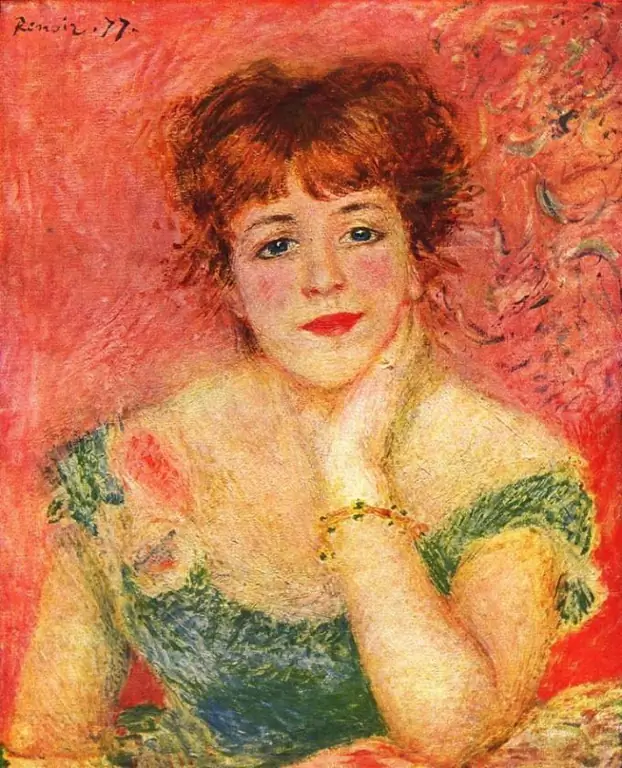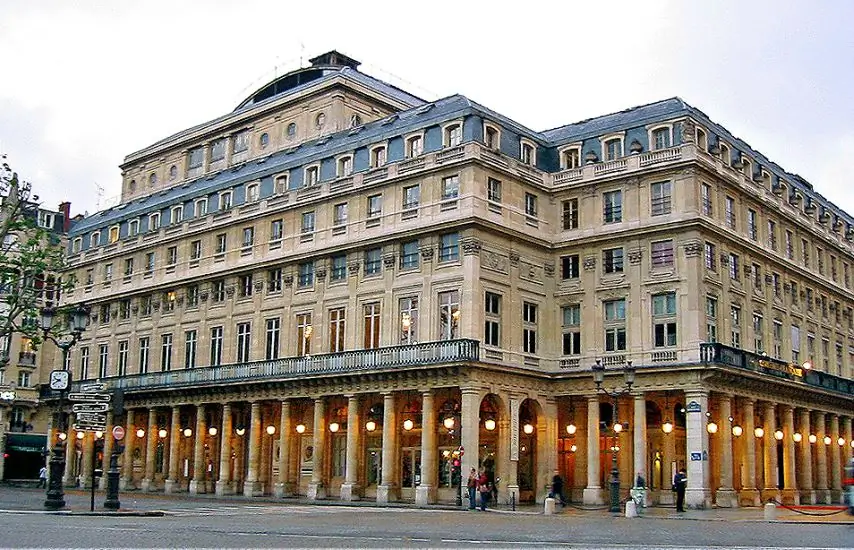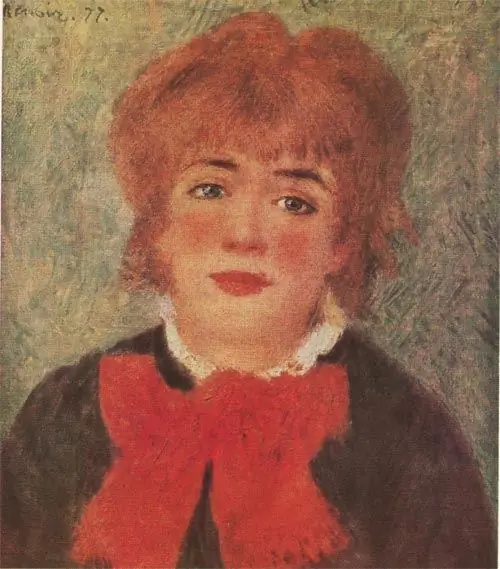- Author Antonio Harrison [email protected].
- Public 2023-12-16 07:44.
- Last modified 2025-01-22 21:44.
French actress Jeanne Samary lived a short life. She died at 33, but remained on the canvases of the famous painter Auguste Renoir. The famous artist painted four paintings depicting Jeanne. The most famous of them is kept in the Moscow Pushkin Museum.

Jeanne Samary's life was closely connected with the theatrical environment. Her closest relatives, as well as children, one after another, invariably became actors and actresses. During her short career, Zhanna managed to play in many comedic roles. And if not for the premature death, she would have been able to achieve much more on stage.
Theatrical dynasty
Jeanne was born on March 4, 1857 in the small French commune of Neuilly-sur-Seine. Almost every of her relatives was associated with the theater. In the 30s of the nineteenth century, Augustine Suzanne Brohan, Jeanne's grandmother, was considered a popular actress. Especially Augustine succeeded in comedic roles, for which she was awarded prizes more than once. Augustine achieved great success in the theatrical field by joining the troupe of the famous French theater "Comedie Francaise". Subsequently, Augustine's daughters - Madeleine and Josephine - continued the family tradition, becoming actresses of the same theater.

Madeleine, Jeanne's mother, was known to her contemporaries for her roles in numerous vaudeville. Cellist Louis-Jacques Samary became her chosen one. Together, the couple raised four children, who followed in the footsteps of their parents, linking their lives with theater and music.
Theatrical career of Jeanne Samary
Jeanne Samary also continued her theatrical dynasty, enrolling at the age of 14 at the National Academy. Studying the performing arts, the girl quickly got used to the theatrical environment and successfully performed roles in comedy plays. For one of these roles, she was awarded a special prize.
Jeanne's first serious debut on the stage took place at the Comedie Française theater. She was to be reincarnated as Doreen's servant from Moliere's comedy Tartuffe. After that, local newspapers described her as "plump, pink-cheeked, cheerful" girl. Throughout her life, Jeanne had to play many more similar roles - cunning, dexterous and flirtatious servants. She took part in plays by Hugo, Bourseau, Moliere and other authors.
In 1879, twenty-two years old Jeanne was introduced to the theater as a permanent member of the troupe, which was a great achievement for any actor.
Portraits of Jeanne Samary
The famous artist Auguste Renoir met the young actress at a literary and artistic evening, where Jeanne read poems. Young people talked for two and a half years. During this time, the painter managed to paint three portraits of Jeanne, and all of them are radically different from each other.
In the first picture, Jeanne is presented rather casually: dark clothes, a white collar, a large red bow. Renoir was dissatisfied with his work and a month later began to paint a new portrait, which is still considered the most successful of all. The first work of the artist is currently in the theater "Comedie Francaise".

In the second portrait, Jeanne is depicted in a green and blue dress against a pink background. The girl rests her chin on her left hand, and her red hair is slightly disheveled. The actress here is simultaneously brooding and smiling, but in general, the portrait carries a feeling of serenity and extraordinary freshness. To correctly see the impressionist painting, you need to stand at a certain distance from it, only then you can get the correct perception. In France this painting was called “La Reverie”. It is difficult to find a suitable Russian synonym for this word. This is contemplation and dreaming at the same time.

In the third portrait, Jeanne Samary is depicted in full growth against the background of the theatrical interior. Here, a young and flirtatious girl is dressed in an expensive dress with a deep neckline and a beautiful train. The slender waist is wrapped in a gold belt. This portrait can be seen in the halls of the State Hermitage in St. Petersburg.

Marriage and family
In 1880, Jeanne became the happy wife of a respectable Parisian aristocrat and financier Paul Lagarde. When he first saw a girl on the stage, the young man realized that he had found his beloved. Unfortunately, Paul's parents did not appreciate the choice of their son and even made an attempt to annul the marriage by starting a legal battle. Despite this, the family life of Jeanne and Paul was happy.
The last decade and death
The last ten years of Jeanne Samary's life were accompanied by the birth of two daughters. Having matured, they followed in the footsteps of their mother, making a career of quite successful and talented actresses. But Jeanne did not have time to see her daughters on stage.
In 1890, Paul Lagarde, together with the girls, rested in the small town of Trouville. Jeanne went to visit her relatives, but upon arrival she felt unwell. Having consulted a doctor, the young woman found out that she had contracted typhus. Jeanne immediately returned to Paris to improve her health, but she could not be cured - on September 18 she was gone. About two thousand friends and admirers came to the funeral service at the Church of St. Roch to say goodbye to their beloved actress.
After her death, Paul Lagarde lived for another thirteen years. His consolation in the most difficult moments was often the second portrait of Renoir, which hung in the family nest of Paul and Jeanne. After Lagarde's death, the family's property was put up for sale. The famous creation of Renoir interested the Russian merchant Ivan Morozov. So the painting of the French impressionist ended up in Russia.






